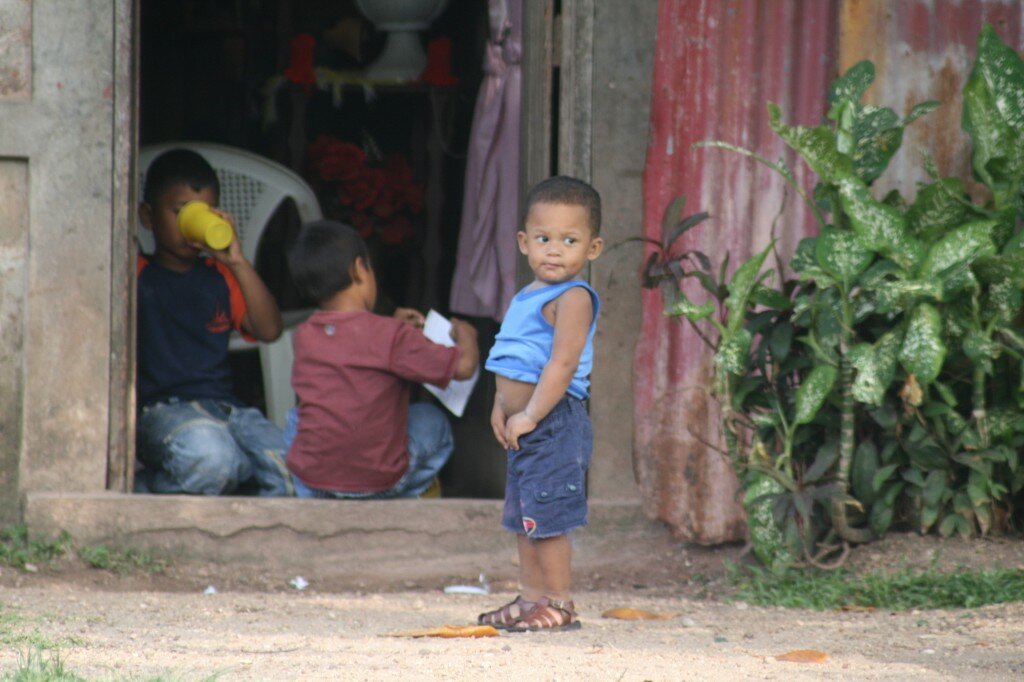In the face of many obstacles, Nicaragua’s history in ensuring a national deworming program has shed light on the potential for success. Former Global Network intern, Frankie Lucien, and fellow George Washington University Masters student Cara Janusz, traveled to Nicaragua and investigated the challenges and achievements of the Nicaragua experience and developed a case study with support from Children Without Worms.
This week End the Neglect is featuring a six-part series of blog posts covering interesting elements of the Nicaragua experience highlighted in the case study, entitled “Worms and WASH(ED)”.

A community health post during Vaccination Week in Nicaragua.
Ensuring access to treatment for intestinal parasites requires coordination of donors, governments, and organizations at all levels. One critical factor in this is integration. The integration of health programs can have many benefits over vertical stand-alone programs. Integration can be more cost-effective, and can lead to savings in financial and personnel costs.
So what exactly is integration? Many times, there are partnerships, funding, or programs for a single disease. Integration involves combining these programs to improve delivery to those who need them with the resources and commitments that are already in place. In the paper by Grépin and Reich, integration can involve joining certain activities or policy functions of different programs together, merging these programs or creating a new organization. Beyond integration of the seven NTDs, integration can also be seen by combining NTD interventions with other public health programs.
In the case of Nicaragua, deworming efforts have been incorporated into the Ministry of Health’s National Immunization Campaign (EPI). Once a year, mebendazole is given to children along with vaccinations and vitamin A supplements through schools, health posts, and later “mop up” campaigns to cover non-enrolled school-age children. Program integration makes sense as their targets are interconnected. For example, mass drug administration of intestinal parasites is combined with hygiene programs such as WASH (water, sanitation, and hygiene education) and Escuelas Saludables in Nicaragua. Deworming efforts paired with education on proper hygiene practices and clean water promotes a sustainable solution to tackling both issues at the same time.
Integration, however, is not perfect. The partnership between the Ministry of Health (MINSA) and Children Without Worms has led to covering 87 percent of school-age children with treatment for intestinal worms in 2010, which surpasses the WHO coverage target of 75 percent. There are other NGOs, as was described in an earlier part of this series, that donate drugs separately, and a lack of communication between these NGOs and the MINSA makes tracking drug administration difficult in parts of the country. For example, children under five should be provided with chewable tablets of mebendazole for safer administration. However, there is no way of tracking if they received these particular types of tablets, and, as the case study points, teachers in Leon reported that children as young as three were receiving the non-chewable forms of the drug. It was also unclear as to where the tablets came from. Other logistical challenges arise in unforeseen situations because two programs coming together bring different experiences. When mebendazole was administered through the immunization campaign, neither water nor cups were provided for children to take the tablets. As the program expands and works out the kinks in combining these two campaigns, detailed coordination to ensure the proper distribution of the drugs and improve logistics will be key.
In the long run, integration is a sustainable method for leveraging existing health programs in developing nations to address synergistic public health challenges. In reality, however, there are glitches and nuances in the system, which take time to work out. Getting all the puzzle pieces to the table is only part of the challenge; the puzzle pieces must then all fit together to fully cover the target population, leaving no gaps.
To read more about the case study “Worms and WASH(ED)” please click here.


